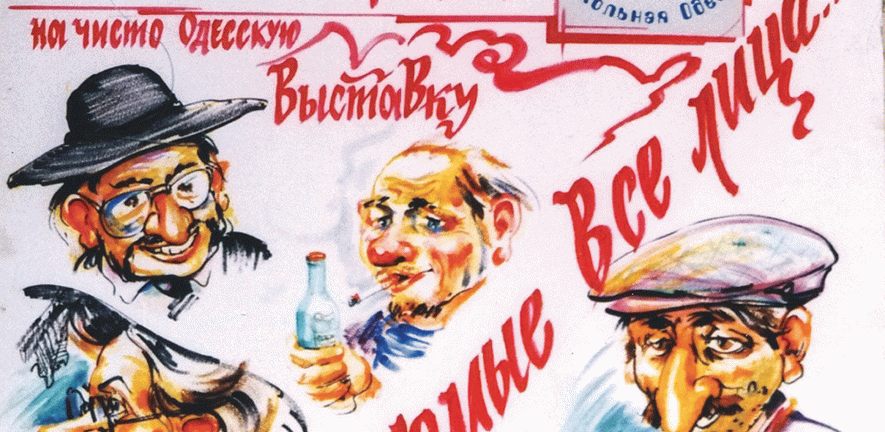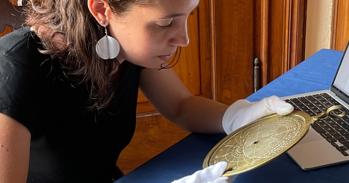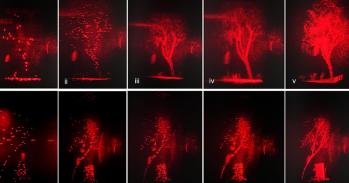
Research on the changing face of Eurasian cities - formerly famous for cosmopolitanism and now crossroads of migration - hopes to provide an understanding of their new social make-up.
Research on the changing face of Eurasian cities - formerly famous for cosmopolitanism and now crossroads of migration - hopes to provide an understanding of their new social make-up.
The cities are thus becoming hosts to new kinds of ‘trans-locality’, set up not only by migration but also by tourism and the openings for the imagination offered by the internet.
Migration flows in the past 15 years have greatly altered the character of many cities of Eurasia. Research in the Department of Social Anthropology led by Professor Caroline Humphrey is comparing the changing social dynamics of three cities famed for their cosmopolitanism: the two great ports of the Black Sea – Odessa and Istanbul – and the trading and religious centre Bukhara in Uzbekistan. All three were extolled for their harmonious spirit and diversity during Tsarist/Soviet and Ottoman times. Now, most people of the previously large minority communities have emigrated: Jews to Israel or the USA; and Greeks, Armenians, Germans, Romanians, Russians and Tatars to their various homelands. What is the impact – in particular the cultural impact – of these sporadic, yet repeated, travels across the Black Sea?
Surging currents
The established patterns of multi-ethnic interaction in Istanbul, Odessa and Bukhara have been replaced by a new edginess. Incomers from rural areas have taken up the vacated places: villagers from Anatolia have moved into Istanbul, Ukrainians and other Slavs into Odessa, and rural Uzbeks into Bukhara. These migrations are happening at the same time that the cities find themselves in states that are stridently more nationalistic than they were in previous decades.
Seen en masse, Odessa and Bukhara look a good deal less ethnically and religiously diverse than they did. But on a small scale, a new group of global migrants is appearing: Chinese, Afghans, Vietnamese and Africans, mostly arriving to trade. And now, just as Turkish workers moved to Europe in the 1980s, there is also considerable out-migration of Uzbeks and Ukrainians from Bukhara and Odessa to international destinations for work. Indeed, Odessa has become something of a funnel-city, channelling mobile people (refugees, prostitutes, domestic-workers, builders, shuttle-traders) from all over the former-USSR through Istanbul and other Black Sea ports to Europe and elsewhere.
The cities are thus becoming hosts to new kinds of ‘trans-locality’, set up not only by migration but also by tourism and the openings for the imagination offered by the internet. Yet there remain traces and images from former times. The research team has coined the term ‘post-cosmopolitan’ to characterise this many-stranded kind of urban sensibility. The project is exploring these three cities not so much to contrast them (although they are of course very different) but to point to common processes that seem to be occurring in many cities across Europe and Asia in the 21st century.
Residues and memories
As a start, it was necessary to study critically the conventional idea of cosmopolitan harmony, because it was often imposed by the state. The research team – Professor Humphrey and Dr Vera Skvirskaja in Odessa and Bukhara, and Dr Yael Navaro-Yashin in Istanbul – is documenting the narratives, recollections and practices of the real cosmopolitan relations that existed when people were forced to live together. People accepted, took a practical interest in, and often warmly respected other ways of life, but at the same time they upheld strict and nuanced boundaries between ‘us’ and ‘them’. With certain groups it was permissible to take tea but not to eat together; with others one could attend a religious rite but in no circumstances marry.
Writers, architects, musicians, dressmakers, chefs, sailors, and all who were in touch with the magic of other cultures, were the vectors of cosmopolitan impulses. Dense urban interactions gave rise to idiosyncratic city-specific ways of speaking – ‘languages’ that were in fact mixtures of several languages – and the researchers were often told that people’s loyalty was to the city rather than to the state. These more or less cordial, but always limited, relations were robust. The ideal of urban civility persisted, even through revolution, state-inspired pogroms, and the influx of evacuees during World War II.
New social configurations
Today in Bukhara and Odessa those dense neighbourly relations have been replaced by more inward-looking and xenophobic attitudes. Many vignettes of city life confirm this. In the urban courtyards, where apartments are now privatised, strangers are often no longer welcome. Citizens have turned to the idea of ‘tolerance’, which pays lip-service to earlier traditions, but in fact requires only that strangers be tolerated – in other words ignored, not beaten up. Even tolerance is under strain. The vast container market of southern Ukraine called ‘7th Kilometre’ has been sited outside Odessa, and the Afghan, Vietnamese and other traders are afraid to travel there except in convoy for fear of attacks. Sailors describe how merchant ships travelling the seas from Odessa, formerly transmitters of cosmopolitanism, are now rigidly divided – the sailors of different ranks and ethnicity barely talk to one another.
Meanwhile, the few people left of the old minority communities in the cities are experiencing a huge shift in gravity. Out-migration has created populous new diasporas across the world. There are over 10 times as many Bukharan Jews in Queens, New York, as in Bukhara itself. Communicating with the home city by websites, travel agencies, marriage bureaux, charitable organisations and investments, the departed groups are increasingly influential in the home cities at a distance. The Greeks or Jews left behind, who are often elderly and bereft, typically say they feel like marginal outposts of world communities in their own home cities, especially with the consolidation of Islam in Bukhara and Istanbul, and Orthodox Christianity in Odessa.
Nevertheless, there are lively strands that cross this picture of retrenchment. Many traders with international links have made their fortune. Even a few Gypsies, who are largely excluded from mainstream business, have become rich, building palatial houses and burying their dead in marble mausoleums in one of the old Jewish cemeteries. Commercial links between the two Black Sea cities have transformed parts of old Istanbul, where Russian sometimes serves as a lingua franca.
Just as in the 1920s, when Russian women émigrés were said to have ‘wrought more destruction [of Turkish morals]…than Russian armies in centuries’, today Slav women, including prostitutes, can be represented as agents of modernisation, especially of gender relations among rural migrants in Turkish cities. Meanwhile, Turkish men going the other way, said to be excellent and sober husbands, have set up flourishing businesses in Odessa.
Living historically
This research is only beginning. One of the themes to be explored is history, materiality and affect in the city. Diverse previous communities have left traces in the form of religious buildings, cemeteries and particular architectures. In Istanbul, neighbourhoods previously inhabited by Greeks, Jews and Armenians have abandoned churches and houses marked by the Star of David or with the names of former owners. In studying such complex urban spaces as lived and remembered phenomena, the research explores a new idea of ‘vertical’ cosmopolitanism – that which is embedded in the layered historical remains of the city.
For more information, please contact the author Professor Caroline Humphrey (ch10001@cam.ac.uk) at the Department of Social Anthropology. The Black Sea Currents project is funded by the Arts and Humanities Research Council (AHRC) as part of the ‘Diasporas, Migration and Identities’ trans-disciplinary programme.
This work is licensed under a Creative Commons Licence. If you use this content on your site please link back to this page.





